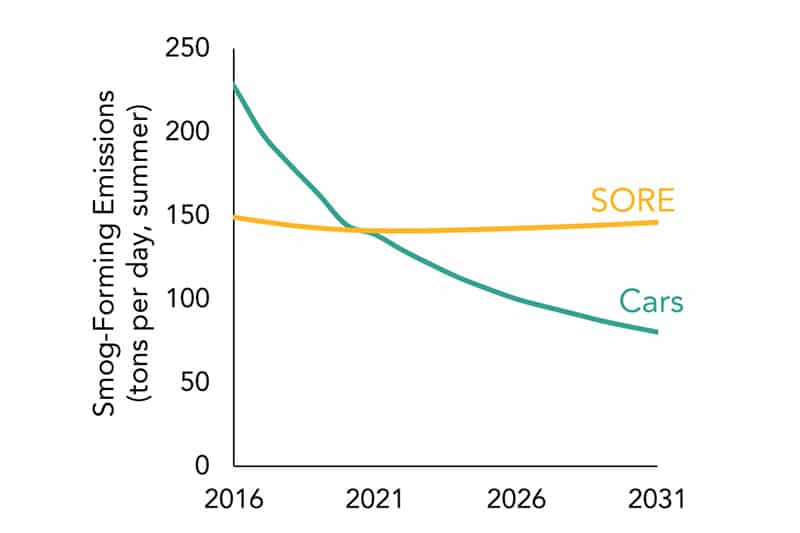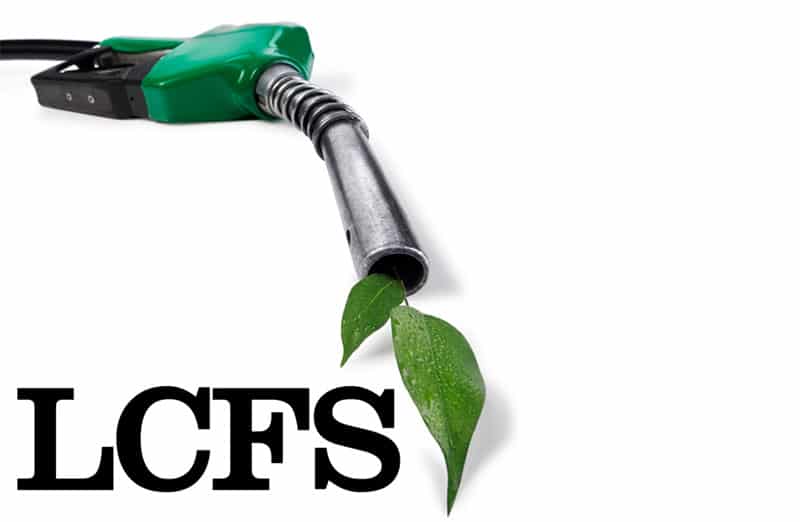§ 1045.110 How must my engines diagnose malfunctions?
The following engine-diagnostic requirements apply for engines equipped with three-way catalysts and closed-loop control of air-fuel ratios:
(a) Equip your engines with a diagnostic system . Equip each engine with a diagnostic system that will detect significant malfunctions in its emission control system using one of the following protocols:
(1) If your emission control strategy depends on maintaining air-fuel ratios at stoichiometry, an acceptable diagnostic design would identify a malfunction whenever the air-fuel ratio does not cross stoichiometry for one minute of intended closed-loop operation. You may use other diagnostic strategies if we approve them in advance.
(2) If the protocol described in paragraph (a)(1) of this section does not apply to your engine, you must use an alternative approach that we approve in advance. Your alternative approach must generally detect when the emission control system is not functioning properly.
(3) Diagnostic systems approved by the California Air Resources Board for use with sterndrive/inboard engines fully satisfy the requirements of this section.
(b) Use a malfunction indicator . The malfunction indicator must be designed such that the operator can readily see or hear it; visible signals may be any color except red. Visible malfunction indicators must display “Check Engine,” “Service Engine Soon,” or a similar message that we approve. The malfunction indicator must go on under each of the following circumstances:
(1) When a malfunction occurs, as described in paragraph (a) of this section.
(2) When the diagnostic system cannot send signals to meet the requirement of paragraph (b)(1) of this section.
(3) When the engine’s ignition is in the “key-on” position before starting or cranking. The malfunction indicator should turn off after engine starting if the system detects no malfunction.
(c) Control when the malfunction can turn off . If the malfunction indicator goes on to show a malfunction, it must remain on during all later engine operation until servicing corrects the malfunction. If the engine is not serviced, but the malfunction does not recur for three consecutive engine starts during which the malfunctioning system is evaluated and found to be working properly, the malfunction indicator may stay off during later engine operation.
(d) Store trouble codes in computer memory . Record and store in computer memory any diagnostic trouble codes showing a malfunction that should activate the malfunction indicator. The stored codes must identify the malfunctioning system or component as uniquely as possible. Make these codes available through the data link connector as described in paragraph (g) of this section. You may store codes for conditions that do not activate the malfunction indicator. The system must store a separate code to show when the diagnostic system is disabled (from malfunction or tampering).
(e) Make data, access codes, and devices accessible . Make all required data accessible to us without any access codes or devices that only you can supply. Ensure that anyone servicing your engine can read and understand the diagnostic trouble codes stored in the onboard computer with generic tools and information.
(f) Consider exceptions for certain conditions . Your diagnostic systems may disregard trouble codes for the first three minutes after engine starting. You may ask us to approve diagnostic-system designs that disregard trouble codes under other conditions that would produce an unreliable reading, damage systems or components, or cause other safety risks.
(g) Follow standard references for formats, codes, and connections . Follow conventions defined in SAE J1939–05 (incorporated by reference in §1045.810) or ask us to approve using updated versions of (or variations from) this standard.
§ 1045.115 What other requirements apply?
The following requirements apply with respect to engines that are required to meet the emission standards of this part:
(a) Crankcase emissions . Crankcase emissions may not be discharged directly into the ambient atmosphere from any engine throughout its useful life.
(b) Torque broadcasting . Starting in the 2013 model year, electronically controlled engines must broadcast their speed and output shaft torque (in newton-meters). Engines may alternatively broadcast a surrogate value for determining torque. Engines must broadcast engine parameters such that they can be read with a remote device, or broadcast them directly to their controller area networks. Your broadcasting protocol must allow for valid measurements using the field-testing procedures in 40 CFR part 1065, subpart J.
(c) EPA access to broadcast information . If we request it, you must provide us any hardware or tools we would need to readily read, interpret, and record all information broadcast by an engine’s on-board computers and electronic control modules. If you broadcast a surrogate parameter for torque values, you must provide us what we need to convert these into torque units. We will not ask for hardware or tools if they are readily available commercially.
(d) Altitude adjustments . Engines must meet applicable emission standards for valid tests conducted under the ambient conditions specified in 40 CFR 1065.520. Engines must meet applicable emission standards at all specified atmospheric pressures, except that for atmospheric pressures below 94.0 kPa you may rely on an altitude kit for all testing if you meet the requirements specified in §1054.205(s). If your rely on an altitude kit for certification, you must identify in the owners manual the altitude range for which you expect proper engine performance and emission control with and without the altitude kit; you must also state in the owners manual that operating the engine with the wrong engine configuration at a given altitude may increase its emissions and decrease fuel efficiency and performance.
(e) Adjustable parameters . Engines that have adjustable parameters must meet all the requirements of this part for any adjustment in the physically adjustable range. An operating parameter is not considered adjustable if you permanently seal it or if it is not normally accessible using ordinary tools. We may require that you set adjustable parameters to any specification within the adjustable range during any testing, including certification testing, production-line testing, or in-use testing.
(f) Prohibited controls . You may not design your engines with emission-control devices, systems, or elements of design that cause or contribute to an unreasonable risk to public health, welfare, or safety while operating. For example, this would apply if the engine emits a noxious or toxic substance it would otherwise not emit that contributes to such an unreasonable risk.
(g) Defeat devices . You may not equip your engines with a defeat device. A defeat device is an auxiliary emission control device that reduces the effectiveness of emission controls under conditions that the engine may reasonably be expected to encounter during normal operation and use. This does not apply for altitude kits installed or removed consistent with §1045.655. This also does not apply to auxiliary emission control devices you identify in your application for certification if any of the following is true:
(1) The conditions of concern were substantially included in the applicable duty-cycle test procedures described in subpart F of this part.
(2) You show your design is necessary to prevent engine (or vessel) damage or accidents. For example, you may design your engine to include emergency operating modes (sometimes known as limp-home operation) that would allow a vessel to return to land in the event of a malfunction even if such operating modes result in higher emissions.


